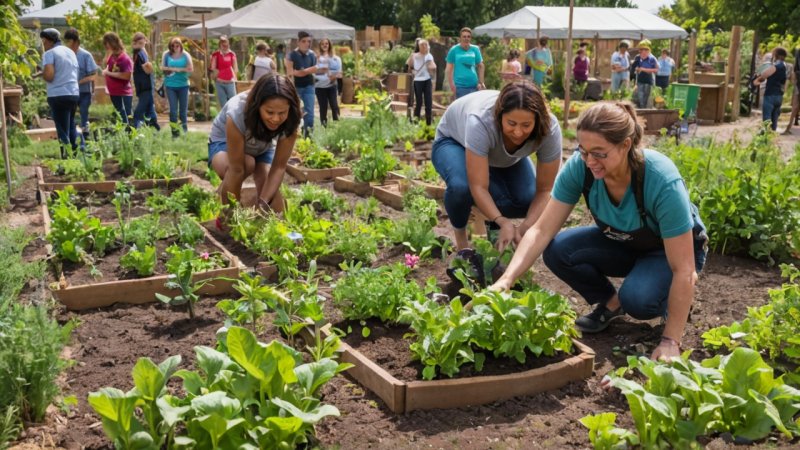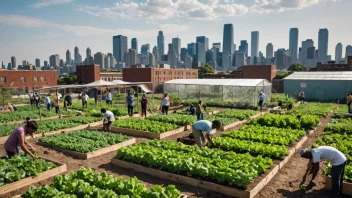Climate change is one of the most pressing issues of our time, affecting millions of lives across the globe. Low-income communities are often hit the hardest, facing not only the immediate impacts of climate-related disasters but also the long-term challenges of adapting to a changing environment. Climate resilience programs are increasingly recognized as crucial tools for empowering these communities to withstand and recover from climate shocks. This article explores the various dimensions of climate resilience programs, their significance for low-income communities, and how individuals and organizations can get involved in fostering sustainable change.
Understanding Climate Resilience
Climate resilience refers to the ability of individuals, communities, and systems to anticipate, prepare for, respond to, and recover from climate-related hazards. It encompasses a range of strategies and initiatives designed to minimize vulnerability and enhance adaptive capacity. The goal is not just to endure the impacts of climate change but to thrive amidst them.
The Vulnerability of Low-Income Communities
Low-income communities often have limited resources to cope with the effects of climate change. These communities may reside in areas prone to flooding, wildfires, or extreme heat, and often lack adequate infrastructure, healthcare, and educational resources necessary for effective response and recovery. Additionally, economic instability can hinder their ability to invest in preventive measures.
Key Challenges Faced
- Limited Access to Resources: Many low-income households lack access to financial resources that enable them to invest in climate-resilient infrastructure or emergency preparedness.
- Health Risks: Climate change exacerbates health issues, particularly for vulnerable populations, leading to increased rates of heat-related illnesses, respiratory conditions, and infectious diseases.
- Displacement: Natural disasters often lead to displacement, and low-income families may not have the means to relocate or rebuild.
- Social Isolation: The impacts of climate change can deepen social isolation, especially in communities already facing systemic inequities.
The Role of Climate Resilience Programs
Climate resilience programs aim to address these challenges by equipping low-income communities with the tools and knowledge necessary to adapt to climate change. These programs can take various forms, including education initiatives, infrastructure improvements, and community engagement efforts.
Education and Awareness
Education is a cornerstone of climate resilience. Programs that educate community members about climate change—its causes, impacts, and mitigation strategies—empower them to make informed decisions. Workshops, informational sessions, and community events can foster a greater understanding of local climate risks and promote sustainable practices.
Infrastructure Development
Investing in climate-resilient infrastructure is essential for low-income communities. This includes improving drainage systems to prevent flooding, creating green spaces to reduce urban heat, and retrofitting buildings to withstand extreme weather events. Such initiatives not only enhance safety but also contribute to the overall quality of life.
Community Engagement and Empowerment
Engaging community members in the decision-making process is vital for the success of climate resilience programs. By involving locals in identifying their specific needs and priorities, programs can be tailored to address the unique challenges faced by each community. Empowering residents through leadership training and participatory planning processes fosters a sense of ownership and responsibility.
Successful Case Studies
Several initiatives around the world illustrate the effectiveness of climate resilience programs in low-income communities.
1. Community-Based Adaptation in Bangladesh
In Bangladesh, a country highly vulnerable to climate change, community-based adaptation programs have been implemented to enhance resilience among low-income populations. These programs focus on building flood-resistant homes, improving water management systems, and providing training in climate-smart agriculture. As a result, communities have reported increased food security and reduced vulnerability to climate impacts.
2. Urban Resilience Initiatives in New Orleans
Post-Hurricane Katrina, New Orleans launched several urban resilience initiatives aimed at rebuilding the city with climate adaptation in mind. Programs focused on enhancing green infrastructure, such as rain gardens and permeable pavements, have helped mitigate flooding while also improving community well-being through increased green spaces.
3. The Resilient Cities Program in the Philippines
In the Philippines, local governments have partnered with NGOs to implement the Resilient Cities program, which aims to strengthen disaster preparedness and response in low-income urban areas. Through capacity building, early warning systems, and community drills, residents are better equipped to handle climate-related disasters.
Getting Involved: How You Can Make a Difference
Individuals and organizations can play a crucial role in supporting climate resilience programs for low-income communities. Here are some ways to get involved:
1. Volunteer
Many organizations working on climate resilience projects rely on volunteers. Whether it's helping with community workshops, participating in tree-planting events, or assisting with disaster preparedness training, your time and skills can make a significant impact.
2. Advocate for Policy Change
Advocacy is vital for ensuring that climate resilience programs receive the attention and funding they need. Engage with local policymakers, join advocacy groups, and raise awareness about the importance of supporting low-income communities in the face of climate change.
3. Educate Others
Share information about climate resilience and its significance with your friends, family, and social networks. The more people understand the challenges faced by low-income communities, the more likely they are to take action.
4. Support Local Initiatives
Identify local organizations working on climate resilience and offer your support. This could involve volunteering, providing technical expertise, or simply amplifying their message through social media.
Conclusion
Climate resilience programs are essential for supporting low-income communities in navigating the challenges posed by climate change. By investing in education, infrastructure, and community engagement, these programs empower individuals to not only survive but thrive in the face of adversity. As we confront the realities of a warming planet, it is imperative that we come together to support and amplify these initiatives. Every action counts, and by working collectively, we can build a more resilient future for all.






